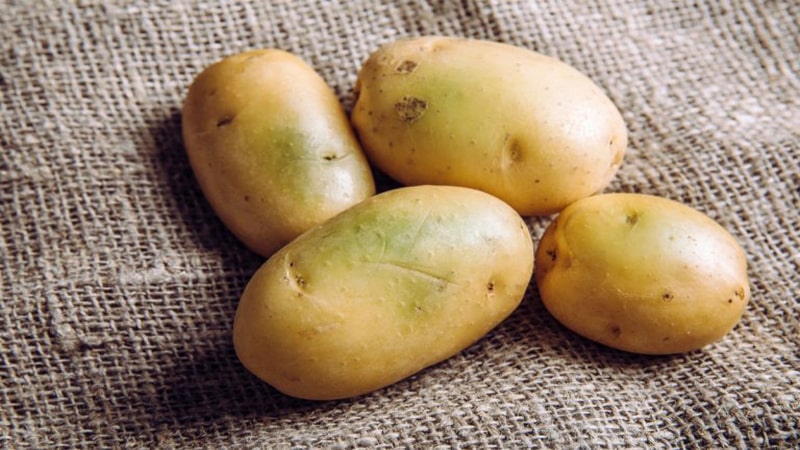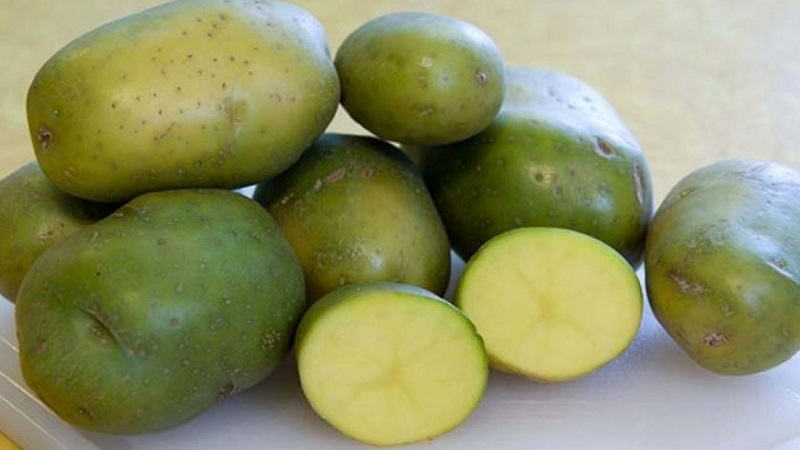Potatoes, like many other vegetables and fruits, can change color or sprout when stored for an extended period. But what does it mean when potatoes turn green? Is it safe to eat them? Let’s find out.
1. Why Do Potatoes Turn Green?
Prolonged exposure to sunlight causes potatoes to develop green patches, which eventually spread to the entire tuber. This discoloration is due to the presence of chlorophyll just beneath the potato’s skin.
 Why Do Potatoes Turn Green?
Why Do Potatoes Turn Green?
While chlorophyll is commonly found in green vegetables and is not harmful to health, it indicates that the potato has started producing glycoalkaloid, also known as solanine.
Solanine is a natural defense mechanism in potatoes against UV radiation, insects, animals, and harmful fungi. It works by inhibiting enzymes and disrupting nerve transmission. Additionally, solanine damages cell membranes and intestinal permeability.
2. Are Green Potatoes Safe to Eat?
 Are Green Potatoes Safe to Eat?
Are Green Potatoes Safe to Eat?
According to Best Life magazine, high levels of solanine can be toxic to humans. Specifically, when potatoes turn green, their starch converts into sugar, and this sugar transforms into alkaloids called solanine and chaconine-alpha, which are harmful and can lead to potato poisoning. Consuming small amounts of these alkaloids can cause digestive issues.
Solanine is typically concentrated in the potato’s skin, so peeling or removing the eyes can reduce the toxin levels by about 30%. However, experts do not recommend eating green potatoes, and it’s best to discard them.
3. What Happens If You Eat Green Potatoes?
Solanine has a bitter taste and can cause a burning or itching sensation in the throat. If you accidentally consume green potatoes, it’s important to monitor yourself for symptoms of solanine poisoning.
 What Happens If You Eat Green Potatoes?
What Happens If You Eat Green Potatoes?
Mild and common symptoms include abdominal pain, fever, diarrhea, headache, vomiting, and difficulty breathing. More severe symptoms may include paralysis, seizures, coma, and even death. Mild symptoms usually subside within 24 hours, but for more severe cases, immediate medical attention is required.
4. How to Properly Store Potatoes
After purchasing potatoes, sort through them and discard any that are bruised or soft. Store the potatoes in a cool, dark place, such as a basement or a cabinet away from sunlight, fluorescent lights, and moisture to prevent sprouting.
Avoid washing potatoes before storage, as moisture can promote bacterial growth and spoil the potatoes. Instead, use a dry cloth or brush to remove any dirt from the surface.
 How to Properly Store Potatoes
How to Properly Store Potatoes
Consider storing potatoes in mesh bags, similar to those used in supermarkets. Alternatively, place them in paper bags or boxes with ventilation holes, and separate the potatoes with newspaper to ensure airflow.
At a temperature of 6-10°C, potatoes can be stored for several months without sprouting. Research suggests that storing potatoes at cooler temperatures can increase their shelf life by up to four times compared to room temperature while retaining their nutritional value. However, extremely low temperatures may cause the potatoes to sweeten, which can be detrimental to your health.



































